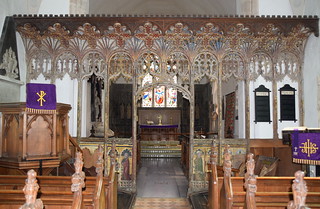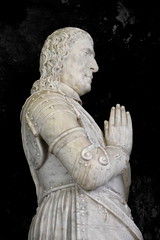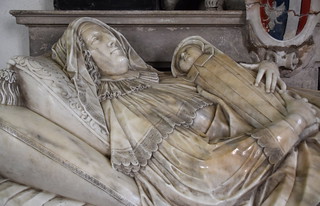Suffolk Churches (original) (raw)
Follow these journeys as they happen at Last Of England Twitter.
Some churches are simply beautiful - maybe I am getting sentimental in my old age, but I'd come to Bramfield as often as I could even if it had nothing of any interest inside it. The exterior is so gorgeous that it wouldn't bother me if the inside was now a furniture storeroom smelling of gas. The view eastwards over the pub down into the village is lovely. This is a church where you'll be as pleased as punch if you find it on a sunny day.
The thing everyone remembers about Bramfield, of course, is that it has a detached tower. It is the only detached round tower in Suffolk, and it might remind you of something similar at Little Snoring in Norfolk. However, there it is clear that a church was attached to the tower, then demolished and rebuilt to the north. It is hard to think that this ever happened at Bramfield, and I do not think this tower has ever had a building attached to it. It is unusual in that it is older than the body of the church (most round towers are attached to churches that show evidence of being originally older than the tower) but, of course, the church may also be a rebuilding on its original site, and probably was.
What you see is now almost entirely 14th Century, under a lovely thatched roof. St Andrew has a wildly good collections of headstops, their faces full of character. There is also a well preserved green man on the eastern eaves of the nave, and on the other side, rather curiously, what look like two giant shellfish, but are probably garlands of flowers.
I said that a visit here would be enjoyable even if there was nothing inside, but of course Bramfield church has an interior of great interest. You step into a small church, intimate in its scale, the nave made lovely by the light green of the decorative glass in the windows. It is very like the glass by Constantine Woolnough a few miles off at Dennington, and James Bettley in the revised Buildings of England volume for East Suffolk tells us that it was installed between the 1860s and 1870s by Emily Owles & Son of Halesworth. To the east is the screen. It is quite late, probably early 16th Century, and it is a riot of vaulting, gesso-work, cusping and colouring. Among the gessoed motifs are the flowers we saw on the eaves outside. There were eight Saint panels in the dado, and five survive - Matthew, Mark, Luke and John, and also St Mary Magdalene. The first two, on the north side, were repainted by the Victorians, but much survives on all five panels in the way of gesso work.
Bramfield was the site of a significant medieval pilgrimage shrine, and the painted recess for it survives in the north wall of the nave. This was the Shrine of the Good Rood, and in 1507 one Edmund Clarke of Walberswick bequeathed 10s to the amending of the Good Rood and his angels in Bramfield church. You can still make out the outline of the crucifix, presumably that paid for by Edmund Clarke and which once stood against the back of it, and there are faint surviving paintings of Angels of the Precious Blood around it.
Perhaps more remarkable is the grand memorial in the chancel by Nicholas Stone for Arthur and Elizabeth Coke. This is probably Stone's best work in East Anglia. Arthur died in 1629. His wife had died in childbirth two years earlier, and it is her effigy that makes the memorial remarkable, because she lies lifesize with her infant daughter beneath his kneeling figure. The detail in her flowing clothing is exquisite.
As if this wasn't enough, Bramfield is home to another one of Suffolk's more singular memorials. This is the ledger stone to Bridgett Applethwaite, formerly Bridgett Nelson, who after the fatigues of a married life bravely born by her with Incredible Patience for four years and three quarters bating three weeks; and after the Enjoiment of the Glorious Freedom of an Easy and Unblemish't widowhood, for four years and upwards, She resolved to run the risk of a second Marriage-bed. But DEATH forbade the banns, and having with an Apopleptick dart (the same instrument with which he had formerly dispatch't her Mother) Touch't the most vital part of her brain. She must have fallen Directly to the ground (as one Thunder-strook) if she had not been catch't and supported by her Intended Husband. Of which invisible bruise, after a Struggle for above sixty hours, with that Grand Enemy of Life (but the certain and MercifulFriend to Helpless Old Age) In Terrible Convulsions, Plaintive Groans or Stupefying Sleep, without recovery of her speech or senses, She dyed on ye 12th day of September in ye year of Our Lord 1737 and of her own Age 44.
Sam Mortlock recalls that the Ecclesiological Society, in its description of this church in its magazine in 1846, considered that the inscription on Applethwaite's memorial was so very revolting and profane that we shall not defile the pages of our publication by reproducing it. Beside it is a ledger stone to another Bridgett Nelson, who had died six years previously aged 59. It tells us that she never married.
Simon Knott, May 2019
Follow these journeys as they happen at Last Of England Twitter.






